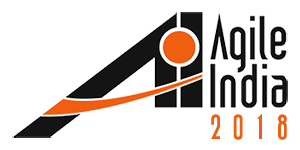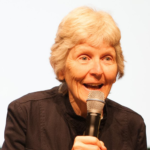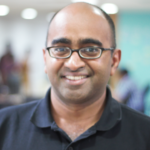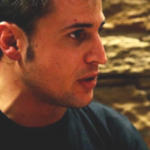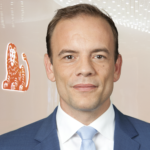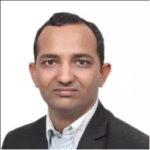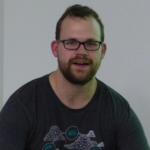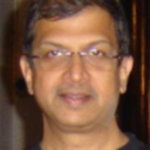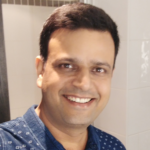Draft Schedule
Schedule likely to change as we finalise the sessions
-
Business Agility Day
March 6th, 2018
-
Continuous Delivery and DevOps Day
March 9th, 2018
-
Design Innovation Day
March 7th, 2018
-
Digital Transformation Day
March 8th, 2018
-
Post-Conf Workshop Day 1
March 10th, 2018
-
Post-Conf Workshop Day 2
March 11th, 2018
-
Pre-Conf Workshop Day 1
March 4th, 2018
-
Pre-Conf Workshop Day 2
March 5th, 2018
-
09:00 - 09:45I have given several presentations about the use of stories instead of science in our industry, so I thought I should try to be more helpful and give a session on experiments. No, this is not too rigorous! I am not going to talk about statistics! I am going to talk about cheap, easy experiments, what to do, what to be aware of, including our cognitive biases. I share some of my experiences with teams who are really doing it. My goal is to encourage everyone to be a bit more methodical in decision-making and to replace "that won't work" with "how can we test it." I hope that participants will walk out the door with a plan in hand for one or more experiments to run in their workplace. I also hope to improve the scientific vocabulary a bit and describe some cognitive biases that get in the way of decision-making.Business AgilityWhereBall Room
-
 10:30
10:30The Foundations of Business Agility
By Shane Hastie Director of Agile Learning Programs @ ICAgile
10:30 - 11:15In the 21st century, organisations need to * Put the customer in the centre of our focus * Shed outdated ways of thinking * Embrace an agile mindset * Incorporate new ways of working * Leverage the pace of change for competitive advantage This talk explores what it means to be agile in a business context. It looks at the key elements needed, how they are interwoven and what is needed for organisations to transform their thinking and behaviour into new ways of working. Business Agility is about putting the customer at the centre of the organization’s focus, changing from measuring activities to outcomes and creating an ecosystem which unleashes the productivity and innovation already present in the people in the organisation.Business AgilityWhereBall Room 1
-
 10:30
10:30Agile People - A Radical Approach for HR and Managers (That Leads to Motivated Employees)
By Pia-Maria Thoren Inspiration Director @ GreenBullet
10:30 - 11:15Corporate cultures, global mindsets, and employee priorities are changing, which means management and human resources departments must also evolve. To ensure teams are well crafted, motivated, and successful, managers and HR professionals must step outside their comfort zone and adapt to younger, newer ways of thinking - they must become Agile. In this talk, management consultant Pia-Maria Thoren outlines how managers, human resources professionals, company decision-makers, and employees can adopt the flexible, fluid, customer-focused mindset of modern tech companies to inspire their workers and strengthen their organizations.Business AgilityWhereTamarind
-
10:30 - 11:15Ever feel like the market moves faster than your marketing team? Or, wonder how flexible your finance (& leadership!) teams would <em>really </em>be if self-direction glitched and blew $1M? Organizations introduce Agile believing it will lead in part to greater responsiveness and resiliency. Yet, why do so many fail to achieve those outcomes? It isn’t just that they’re structured and operated by default along hierarchical lines rather than by design for iterative work. Achieving the full benefits of Agile comes from shifting the culture and mindset of a <em>whole </em>organization, sometimes as radically as encouraging it to "Make New Mistakes." This very philosophy was a driver in the fastest division in HP’s history to reach $1B, a hardware division that was focused on manufacturing operations, with razor thin margins, and markets that changed 3x faster than the development lead time. Through a series of short stories and exercises, attendees will explore 5 practices from that business which led to roaring success. We’ll probe their parallels in Lean / Agile practice. With each one, you’ll briefly self-inspect the state of your own organization, as well as create a backlog you can use to adapt in your "real world" beyond the conference. Do you have, or want, a vision that takes you beyond high performing teams, to a high performing, resilient business? Come hear how you can help your organization shift from mechanics that "do" Agile, and walk away with a feel for what’s possible when not just development, but a whole organization surfs the flow of "being" Agile.Business AgilityWherePlumeria
-
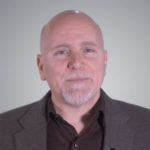 10:30
10:30Change Your Focus: From Speed and Efficiency to High Customer Value
By Ray Arell Corporate Outreach & Business Development @ Agile Alliance
10:30 - 11:15For decades, product development has been focused mostly on the speed and efficiency of delivery. So now we are stuck in the quagmire of talking about the methods and activities of delivery rather than focusing on the actual goal - delivering high value to the customer. Ray Arell shares an evolutionary process to refocus both traditional and agile lifecycles. He describes a more dynamic way of defining value and addressing the needs of the customer, the business, and the developers. Ray provides practical examples of how to identify opportunities, expand concepts, and deliver high-value solutions. He includes an overview of heuristics and models that are critical to solutions - safe-to-fail probes, sensemaking for product requirements capture, the Kano model, the Cynefin framework, the Three-Circle model, Beer’s viable system, and other proven industry models that enable a coherent approach to solutions development. Join Ray as he resets the epidemic of activity-based thinking. Agile - or any other method/activity - is not the destination. It is time to move to a mindset of high-value delivery.Business AgilityWhereBall Room 2
-
 11:30
11:30[email protected]: BE-DO Framework – Accelerating Enterprise Agility Culture
By Vishweshwar Hegde Partner, PM Power Consulting @ PM Power Consulting
11:30 - 12:15Business Agility is achieved through proactive & quick sensing of Customer/Market needs and fulfilling those needs through end to end collaboration of Customers, Business Functions and Solution Delivery Functions in a seamless flow. Apart from technology and process elements, the critical success factor for such functioning is the mindset and culture aspects of people and organization units across the value chain. Mindfulness is a great tool to develop Emotional Intelligence which is the bedrock of leadership tenets for Agility Culture like proactiveness & self-organizing, cross-functional collaboration and facilitative leadership styles. This session covers a case study of Enterprise wide Mindfulness transformation in a 2000+ strong global Technology company. The session covers aspects of: * Creation of a [email protected] framework called BE-DO Framework – Being Mindful and Doing Mindfully. Being Mindful by Being Aware, Alive and Calm; Doing Mindfully by Perceiving Immersivity, Processing non-judgmentally and Performing Empathetically. * Mindfulness techniques and practices at individual level like BreathWatch, BodyScan, Balanced Breathing, Journaling. * Organizational and Team ceremonies to inculcate Mindfulness as part of work practices like Mindful Meeting, Sense Walk. * Results captured after 6 weeks of practice of Mindfulness practices by the participants on Personal Wellbeing, Personal Effectiveness and Professional Performance. * Organizational Change Management including unique role called Happiness Evangelist. The session will be a joint presentation by the Happiness Evangelist and the Mindfulness Coach.Business AgilityWhereTamarind
-
 11:30
11:30Why your company will most probably not become Agile?
By Anton Zotin Agile Whisperer @ FlixBus
11:30 - 12:15You have tried Scrum, Kanban, XP, Crystal and other even less known frameworks and methods that claim to help you to become Agile. You have applied them pure, you have tried to tweak them, and even you have made some homemade cocktails out of them. So yet you still can't say your company is Agile. Your Cxx-s are willing to change the company, and themselves. Your employees on all levels genuinely want to step into the Agile journey. Yet there is nearly no progress toward a real organizational agility. What is the secret? Why is it so hard? Why there are so many crashes on this way in our industry? Why most of the companies will still fail to become Agile, and yours will most probably too. I'm going to answer all these questions during this talk. We will figure out what aspects of a large-scale agile transformation have a mission-critical impact and how they influence each other. Where to put your efforts? How to cut corners? And moreover, how to survive on this journey.Business AgilityWherePlumeria
-
11:30 - 12:15Many in the agile community suggest abandoning performance reviews, but few offer suggestions for alternatives. A large percentage of software developers work in an enterprise environment where performance reviews are mandated. What if you could do performance reviews that will honor agile values and not only suck less, but actually provide value to the individual and the organization? We have rolled out such a system successfully with strong support across the enterprise--from the individual colleagues, to people leaders, and even including HR. We will demonstrate the principles and the specific implementation of our system which you can tailor to your organization’s values and constraints.Business AgilityWhereBall Room 2
-
 11:30
11:30The Wizard of OSS: The Magic of Open Space and Sociocracy for Business Agility
By Jutta Eckstein Coach, Consultant, Trainer @ self-employed
11:30 - 12:15A true agile business transformation can’t result from simply “trying harder” in using known agile methods only because agile has no answer to such questions as legal organizational structure strategy, inspiration, or the role of support departments such as finance or HR. For this reason, necessary key components for a successful enterprise agile transformation must be found outside of agile in other streams of development. These other streams can more readily guide us in developing: Continuous improvement strategies necessary to enable self-sufficiency and adaptation in every department - not just the software department. The executive and board roles in driving organizational agility. Processes, strategies, and structures that enable the current culture to self-organize for company-wide agility. We suggest “BOSSA nova” as a composite of four streams of development that, together, can lead us toward a broad enterprise agile transformation. The acronym stands for: B = Beyond Budgeting, OS = Open Space, S = Sociocracy, and A = Agile. Bossa nova, the style of music, is a synthesis of samba and jazz. Similarly BOSSA nova, the enterprise strategy, is a synthesis of different streams of development. Bossa nova is also an intricate dance, where dancers adapt their steps to the music, and their movements and their spirit in turn influences the musicians. In the same way, BOSSA nova helps your company adapt to its complex context and also influence that context. And finally, Bossa nova in Portuguese means new trend, new wave - which is how we envision a true business agility transformation. In this session, I will focus on the OSS in BOSSA nova and how those two streams of development (Open Space and Sociocracy) can be leveraged for a successful agile business transformation. These two components focus on answering the questions about the strategy for the legal organizational structure and the incorporation of the inspiration.Business AgilityWhereBall Room 1
-
12:30 - 13:15An F16 fighter pilot perspective on how we can achieve business agility at scale using fighter pilots ideas about decentralization, planning, mutual trust and organizational structure. Air combat and product development have more in common then you might think. F16 pilots are planning and executing under extreme uncertainty and in complex environments, just like we are in business and product development. Fighter pilots have thought long and hard about how to solve some of the same issues we are struggling within the agile world. Fast feedback, OODA loop, self-organization, mutual trust, decentralizing without sub optimising ...This talk will inspire you to see your familiar problems in a new perspective, so you can hopefully find new and better solutions.Business AgilityWhereBall Room 1
-
12:30 - 13:15Diversity. It's the topic of the hour. Organisations are all putting 'diversity' and 'equal opportunities' on every job ad. But, for some organisations it still seems to be a struggle. What's the goal? Do we want diverse teams because it's the "right thing to do" or is it "good for our teams and organisations"? Are we hiring minorities to keep up with quotas or our competition? This talk will engage the audience in a frank discussion on what diversity is, why we need it and how we might achieve it. Guiding attendees through the latest research with practical exercises to demonstrate the issues and open discussion to find answers to the following questions: * What does diversity mean? How does it relate to me? * Why does diversity matter in effective teams? * How can teams where everyone is different be effective? * How can we increase diversity in our organisations? * Is positive discrimination a feasible and ethical way to achieve diversity in our organisations? * How can I employ a diverse group, when they are not applying? Diversity is no longer just a moral imperative, it's critical to effective organisations.Business AgilityWherePlumeria
-
 12:30
12:30A Practical Experiences implementing Business Agility at Ericsson
By Hendrik Esser Special Projects @ Ericsson
12:30 - 13:15Seeing the increasing complexity and dynamics in our business and organizational environment, a large, 2000 people product development organization within Ericsson started the journey towards Agile in 2008. We early understood, that this journey can only be successful, if it is not only done by our SW development, but also involves changes in the way we run strategy, financial planning and HR. In this talk, Hendrik Esser, who has been one of the key drivers of this change, will share experiences from that journey. He will share how we got the essential parts of business planning, finance, HR and SW development aligned towards business agility: what we found, what we tried, what succeeded, our set-backs and lessons learned.Business AgilityWhereBall Room 2
-
 12:30
12:30Accelerating Business Agility: A Practical Playbook for Thriving in Uncertainty
By Debra Boseck Business Agility Leader at Slalom Consulting , Pat Reed Agile Consultant and Adjunct Professor iHoriz and UC Berkeley
12:30 - 13:15Developing the capacity to thrive in uncertainty calls for a radical change in our way of thinking (mindset), working, and behaving. Pat will walk us through some differentiating and thought provoking 1st Principles and practical insights to breakout of old mental models and patterns, and share a proven and practical framework. Debra will share case studies from Silicon Valley and Large Enterprise Business Agility transformations; both will walk us through creating a practical playbook and tools we can take away and apply to accelerate our own Business Agility Transformation.Business AgilityWhereTamarind
-
 14:00
14:00Beyond Budgeting – Business Agility for New Business and People Realities
By Bjarte Bogsnes Senior Advisor Performance Framework @ Statoil
14:00 - 14:45- The Statoil implementation journey - The problems with traditional management, including budgeting - The Beyond Budgeting principles and companies on the journey - Statoil's "Ambition to Action" model; - redefining performance - dynamic and relative with a holistic performance evaluation - dynamic forecasting and resource allocation and no traditional budgets - from calendar-driven to event-driven; a more self-regulating management model - Implementation experiences and adviceBusiness AgilityWhereBall Room
-
15:00 - 15:45"Shipping is not success; let it sail" has been my mantra. Many organizations fall into the trap of project-based thinking and for them launching a product/service is success. We should step back and ask, "by launching this product/service, has it created any value (economic or otherwise) for the business and/or customers?" If the answer is no/not-sure, then it's premature to celebrate. Organizations want to achieve certain goals, expressed via measurable outcomes. Unless we see quantitative progress on those outcomes, our job is not done. In this session, Naresh will share his experience helping organizations shift from project/output based thinking to product/outcome-based thinking. Not just at one team level, but at the entire organization level. Once we have the thinking in place, then how do we create a governance model which brings transparency and encourages collective ownership.Business AgilityWhereBall Room 1
-
15:00 - 15:20All big organizations, even so-called "flat" or "networked" ones, are usually quite hierarchical in decision making. Any talk of Holacracy, Teal etc. is unrealistic in these places. In this presentation, Sriram argues that the underlying problem is not hierarchy itself but the opaqueness of decision making which is known to persist even in the absence of a formal hierarchy. He presents Cleararchy as a way to bring transparency, and thereby accountability and learnability, to decision making. This is necessary for decentralized decision making and true empowerment at lower levels of a big organization.Business AgilityWhereTamarind
-
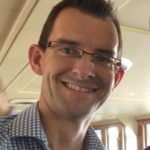 15:00
15:00Agile in the Community with OzHarvest
By Sam Bowtell Agile Practise Lead @ Commonwealth Bank of Australia
15:00 - 15:20OzHarvest is Australia’s leading food rescue organisation, collecting quality excess food from commercial outlets and delivering it directly to more than 1000 charities supporting people in need across the country. The Commonwealth Bank is Australia's leading financial services institution. During the talk I will share the story of how a few of us at CommBank helped Ozharvest adopt Agile to improve how they run their business. The outcome of the session is to stress the importance of helping our community with Agile, and I hope that people will be inspired to try something like this themselves. The session is also a good example of a non technology Agile story that will be helpful to business people.Business AgilityWherePlumeria
-
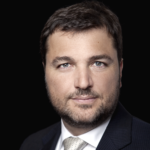 15:00
15:00Connecting Strategy Design and Delivery: Closing the Expensive Implementation Gap
By Ricardo Viana Vargas Executive Director @ Brightline Initiative
15:00 - 15:45Is your next strategic initiative doomed to fail? According to a Brightline Initiative’s survey, conducted by the Economist Intelligence Unit (EIU, 2017) with 500 senior executive leaders across the globe, only one in ten organizations successfully reach all of their strategic goals. On average, organizations fail to delivery 20 percent of their strategic projects. Ricardo Vargas, Executive Director of The Brightline Initiative, will share some insights and key findings of the research and discuss what Leaders are doing to successfully deliver their strategic objectives. Ricardo will draw connections between the research findings and the Brightline’s 10 Guiding Principles to help organizations close the expensive strategy-implementation gap.Business AgilityWhereBall Room 2
-
 15:25
15:25The power of purpose - How purpose drives employee happiness and company results
By Maartje Wolff co founder @ Happy Office , Fennande van der Meulen co founder @ Happy Office
15:25 - 16:55Introduction: Having a clear purpose in both life and work is essential to happiness. Science and business support this view. Companies with a clear purpose perform better than companies without. Purpose is increasingly mentioned as the key to navigate the volatile and complex world we live in. And, people with a purpose in their life, live longer and are healthier. However, finding your purpose, your personal, team and companies purpose, is not an easy task. In this workshop we discuss what purpose means and what the key elements of a sustainable and meaningful purpose are. By playing the Purpose Journey Game, we elaborate the four steps to identify the company or team purpose and build your business around it. Outline: After sharing our knowledge, insights from science and best practices, we will immerse in the subject by playing the Purpose Journey Game. We play the game in small groups (pressure cooker experience). By answering questions, role-plays and discussion participants will experience the method and learn how to find the purpose of their company or team.Business AgilityWhereTamarind
-
15:25 - 16:55An Organisation is a living system build of people and their interactions. When a system is "threat" it reacts with preservation behaviours. Change and innovation are threats, from a system's status quo perspective, so change is hard, and innovation stops when creative workshops end. To preserve the status quo the system needs to (have the illusion to) stay in control, therefore a good number of activities such as risk analysis, estimations, reporting, are set in place to "control the future", so it will be the way we want it to be. These activities we need to perform to reinforce the self-reassurance on our capability to "control the future" self- have a cost. I call it the cost of fear. The workshop offers an experimental space to eventually limit "the cost of fear", ie. those '"mandatory" activities driven by our self-reassurance related needs as stakeholders, rather than by a valuable outcome. It is designed to address test teams organisations, but it can be extended to a wider scale if required by the participants.Business AgilityWherePlumeria
-
16:00 - 16:45When faced with seemingly endless choices and a world moving at an increasing speed, how do you evaluate strategic options with speed and precision? As a leader with over 30 years experience in sales, marketing and corporate roles within tech companies, Andy Cooper has pondered this problem for many years. Andy will explain how using concepts borrowed from Lean, Lean Startup, Agile Software Development, Beyond Budgeting and other adaptive approaches, you can create a highly effective process to make and evaluate decisions using a Value Engineering approach with the benefit that it can be used in multiple situations including evaluating product direction, strategic initiatives, or personal situations evolving value-based thinking. In the session, Andy will walk through an example and show how this can be applied to solve many other tough value-based problems. Andy will also share how he has used this approach to solve sales and marketing challenges in the companies he has worked for.Business AgilityWhereBall Room 2
-
16:00 - 16:45The world is changing more rapidly than ever before and organisations of every size are struggling to remain relevant in the eyes of their customers. The simple fact that the average lifespan of a company has decreased by more than 50 years in the last century demonstrates that not all organisations are prepared for this new reality. It is only high-performing, adaptable and agile organisations that will leverage, lead and thrive in this ambiguous and unpredictable market. We call this business agility. The problem with a statement like that is that there is no common definition of what business agility means. And that’s actually a good thing. In a dynamic and changing market trying to lock it down will defeat the very advantage it brings. Instead, I want you to start thinking of business agility as the common thread. An adaptable and sustainable narrative that binds & guides, rather than directs, us into the uncertain future. This talk will share the state of business agility around the world. We'll look at the Domains of Business Agility, interspersed with case studies from 4 multinational organisation in both the banking and utilities sector .Business AgilityWhereBall Room 1
-
17:00 - 17:45Agile management has become necessary to survive, but is it enough to thrive? Many organizations have embraced Agile management on the assumption that if they upgrade existing products and services through cost reductions, time savings or quality enhancements for existing customers (i.e. operational Agility), they will realize financial gains. Owing to increased competitive pressures, this assumption often proves incorrect and consequently top management support for Agile often flags. It turns out that major financial gains are more likely to come from Strategic Agility, i.e. generating innovations that create entirely new products and markets, and that turn non-customers into customers. Strategic Agility is the next frontier of Agile management. The profit margins are bigger, and the value to society is often larger. Steve will show what’s involved in achieving Strategic Agility, including a playbook for systematically generating market-creating innovations and the necessary shift in culture that is required.Business AgilityWhereBall Room
-
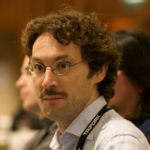 09:00
09:00Adopting DevOps? You are Aiming at the Wrong Target!
By Gregor Hohpe Technical Director @ Google Cloud
09:00 - 09:45Agile methods and DevOps approaches can bring enormous benefits to an organization by increasing flexibility, reducing time-to-value, all while increasing quality. However, these are not methods you simply "adopt". They require a substantial transformation of a company's values, beliefs, and processes. For example, DevOps is about removing impediments from the flow in the software delivery to the business. Likewise, agile requires changing the way the company budgets and funds projects. This session reflects on the experience of truly transforming IT inside a large organization as opposed to simply adopting DevOps.Continuous Delivery and DevOpsWhereBall Room
-
 10:30
10:30Building Software that Lasts
By Kris Howard Director of Developer Relations YOW! Conferences and Workshops
10:30 - 11:15The tech industry thrives on the new, with leaders telling us to "move fast and break things." But what about writing software with the expectation of a lifespan longer than the average Javascript framework? Kris has been working in the tech industry for over 20 years, and she's seen many projects and products come and go. One of her own projects is now in its second decade of life online, and she'll share with you the lessons she's learned from it. You'll learn about several key decisions that can set your project up for longterm success, and what trade-offs you can choose to make when speed is of the essence.Continuous Delivery and DevOpsWherePlumeria
-
 10:30
10:30It's Not Continuous Delivery if You Can't Deploy Right Now
By Ken Mugrage Technology Evangelist @ ThoughtWorks
10:30 - 11:15People often say that they're practicing continuous delivery, and then add something like "I can let the security team know any time" or "I just have to run the performance tests." Ken Mugrage explains why you're not done with your continuous delivery journey if you can't push your software to production right now. Along the way, Ken explores code management strategies, deployment patterns, and types of continuous delivery pipelines you can use to make sure you can deploy right now.Continuous Delivery and DevOpsWhereBall Room 1
-
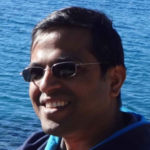 10:30
10:30Build your own MAD-LAB - for Mobile Test Automation for CD
By Anand Bagmar Software Quality Evangelist @ Essence of Testing
10:30 - 11:15In this age of a variety of cloud-based-services for virtual Mobile Test Labs, building a real-(mobile)-device lab for Test Automation is NOT a common thing – it is difficult, high maintenance, expensive! Yet, I had to do it! Attend this talk to understand the Why, What and How I built my own MAD-LAB (Mobile Automation Devices LAB). The discussion will include – * Understanding the context, * Why no cloud-based solution worked for me, * The automation strategy for Android / iOS / Web platform, * The tech-stack (cucumber-jvm / Appium), and, * The core implementation to build your own MAD-LAB! (already open-sourced) * How this results in Continuous Delivery (CD)Continuous Delivery and DevOpsWhereTamarind
-
10:30 - 11:15Infrastructure as Code is a radically different way of working for many infrastructure teams, and for application teams. Users are used to raising tickets, sending emails, or coming around to the desks of infrastructure people to ask for things to be done. Infrastructure people are used to carrying out work by following checklists and running scripts. Managers are used to having detailed designs and project plans for major work, and change request forms and change review boards to handle smaller tasks. Infrastructure as Code is very different. Infrastructure is defined in files in source control. Change management pipelines - like application deployment pipelines - propagate changes, automatically integrating and testing changes before they are pushed into production. The end result of this is that it's possible to have much more rigorous control and assurance of infrastructure implementation and changes, with much less planning and ceremony. This talk aims to describe the moving parts of a typical organisation using Infrastructure as Code. Moving beyond the general patterns, to looking at exactly how changes are implemented and rolled out.Continuous Delivery and DevOpsWhereBall Room 2
-
 11:30
11:30Test Refactoring Workshop - Improving the Maintainability of Your Tests
By Gerard Meszaros CTO @ FeedXL Horse Nutrition
11:30 - 13:00Participants will see and practice techniques for making their tests easier to read and write by aligning the terminology of the test with the terminology of the code-under-test's domain.Continuous Delivery and DevOpsWhereTamarind
-
 11:30
11:30Designing and Deploying Micro-services using Cloud Foundry
By Hari Krishnan Cloud Transformation Coach @ AgileFAQs Tech , Raghav Agarwal Cloud Transformation Coach @ AgileFAQs Tech
11:30 - 13:00Join us for a deep dive into the nuances of breaking a large complex system into smaller independently scalable MicroServices. This will be a hands-on workshop that will introduce you to the MicroServices ecosystem. MicroServices as an architecture pattern does not guarantee characteristics such as composability, maintainability, resiliency and fault tolerance. It only facilitates our thinking around these aspects better. We will be sharing the design principles that we have learned and applied to achieve these characteristics. In this workshop, we will be building a Cloud Native MicroServices application from the ground up. In the process will be introducing the following concepts and discussing advantages, disadvantages, alternative approaches etc. *Gateway/edge services *Service discovery *Load balancing *Inter-service communication and protocols *Circuit breaker pattern *Autoscaling We will be using SpringBoot to build the application and Pivotal Cloud Foundry to deploy the same. However, the concepts are platform agnostic. All code samples will be available on GitHub. Please feel free to bring your laptops and join us for the ride.Continuous Delivery and DevOpsWherePlumeria
-
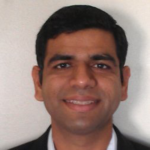 11:30
11:30Infrastructure as service/code using Azure - DevOps practice demo
By Srini Kadiam Co Founder @ AgilePath , Mohan Process Manager @ AJG
11:30 - 12:15Infrastructure as a service (IaaS) is an instant computing infrastructure, provisioned and managed over the Internet. Quickly scale up and down with demand and pay only for what you use. In this demo, we will explain and demonstrate<ol><li>Infrascture as a Code - Key DevOps practice * Azure - Key Concepts * Script Infrastructure as code * Provision Infrastructure * Compare and Contrast Azure with other Cloud Providers like AWS / GCPContinuous Delivery and DevOpsWhereBall Room 2
-
 11:30
11:30Chaos Engineering: Building Immunity in Production systems
By Nikhil Barthwal Sr. Engineer @ Jet.com
11:30 - 12:15Modern software-based services are implemented as large scale, highly distributed systems running in cloud or data centers. Disruptive real-world events like hardware failures or software bugs can create turbulent conditions in the environments where these systems and can lead to unpredictable outcomes. Chaos Engineering is a study of system’s ability to withstand such disruptive turbulent conditions. It works by purposefully injecting failure into the production environment that mirrors the actual failure modes and monitors the recovery. Chaos engineering uses experimentation to study effects of such disruptions. These experiments typically start by defining "steady state" of the system and come up with metrics that can be used to measure this steady state. Then various events that mirror the failure modes (aka "Chaos") that are possible in our production environment (e.g. server crash), are injected systematically in the system in controlled environment. Effect of the injected "Chaos" is observed by collecting and analyzing the metrics identified above. If the system is able to recover successfully, this builds confidence in system’s ability to handle an actual unplanned outage. If a failure to recover is observed, then it becomes a target for improvement before that behavior manifests in the system at large. By continuing to run these simulations, it is possible to identify several such vulnerabilities. Fixing these vulnerabilities strengthens the system over a period of time. Extensive monitoring and logging is essential for the success of Chaos Engineering in its goal to improve the resiliency of the system.Continuous Delivery and DevOpsWhereBall Room 1
-
 12:30
12:30Going Server-less for Web-Services that need to Crunch Large Volumes of Data
By Denis Bauer Team Leader Transformational Bioinformatics @ CSIRO
12:30 - 13:15Real-time analysis through cloud-based solutions is expected in every domain, including life sciences. However, keeping runtime to real-time and constant can be challenging for problems that vary in their complexity such as genome engineering. Here, the whole genome needs to be analyzed for every potential modification spot, hence the computational complexity of finding the optima spot can vary by orders of magnitude. Using AWS Lambda we break down this task into smaller sub-tasks that can be solved in parallel by instantaneously recruiting additional Lambda functions as the complexity increases. The resulting web-tool, GT-Scan2 was featured on the prestigious AWS Jeff Barr blog as it brings together novel scientific insights and unprecedented cloud-compute capacity. This same idea has been used for building CryptoBreeder. In this presentation, we will discuss the general template for serverless web-application and discuss bespoke solutions for overcoming technical limitations server-less imposes.Continuous Delivery and DevOpsWhereBall Room 2
-
12:30 - 13:15As organizations embrace more and more cloud technologies, we're recognizing that many of our established approaches to security don't easily translate into the new IT landscape. And with so much attention around cyber threats, it's never been more important to be on top of your security. James Stewart shares techniques for considering the security of whole systems and explores ways of bringing together cross-disciplinary teams to collectively own secure designs. You’ll learn strategies for understanding the various types of bad actors, who want to break the systems and ways to help the whole team contribute to a conversation about how to address those issues and prioritize them against other user needs. You'll gain an overview of how to apply these techniques to modern cloud environments, both IaaS and SaaS.Continuous Delivery and DevOpsWhereBall Room 1
-
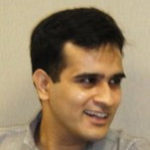 14:00
14:00Breaking a Monolithic - Devops Enabling Realtime Business Decisions & Insights
By Pradeep Chandkiran Sr BI Engineering Manager at Target Corporation , Ravi Kumar Agile Coach @ AgileFAQs Tech
14:00 - 14:45Moving from a traditional Enterprise Data Warehouse culture, i.e. single monolithic Data Warehouse, to a more flexible Integrated Data Warehouse comprising of data marts on different data platforms that meets a specific need, is a challenging proposition but necessity for a nimble agile organization. This case study/talk is an agile/devops transformation journey that started with focus on * Speed (brings analytics closer to real-time business decisions and insights) * Scale (Store first, explain later for all data elements) and * Cost (Modernize with open source technology stack) We will share insights on our pitfalls and how we overcame the challenges, tooling and open source technologies adoption, realigned our strategies to enable 40+ data engineering teams servicing a complex retail business.Continuous Delivery and DevOpsWhereBall Room 1
-
14:00 - 14:45Feature branching is again gaining in popularity due to the rise of Distributed Version Control Systems (DVCS) like Git and Mercurial. With DVCSs, branch creation became very easy. But it comes with a certain cost. Long living branches break the flow of the software delivery process impacting throughput and stability. This session explores some of the reasons why teams are using feature branches, what problems are introduced by using feature branches and what techniques exist to avoid them all together. In conclusion it explores what is exactly evil about feature branching. Which is not necessarily the problems they introduce. But rather the real reasons teams are using them for. The key takeaway is an appreciation of a different branching strategy and how it relates to Continuous Integration.Continuous Delivery and DevOpsWherePlumeria
-
 14:00
14:00Serverless Application Development using Azure Functions
By Nikhil Barthwal Sr. Engineer @ Jet.com
14:00 - 14:45Serverless computing is a cloud computing execution model in which the cloud provider dynamically manages the allocation of machine resources. Typically, applications consist of stateless custom code that's run in ephemeral containers (Function as a Service or "FaaS"), which be spun up on demand. As a result of it, serverless applications tend to be highly scalable. Functional paradigm can be used to such applications and offer several benefits like scalability, productivity, and correctness. Functional Program typically consists of set of functions that operate on immutable data. In pure functional code, the output value of a function depends only on the arguments that are passed to the function and there are no states involved. The functional programming model maps directly to Serverless application model. The objective of the talk is to show how to create serverless applications in Functional Language and demonstrate how various characteristics of functional paradigm capture the behavior of such services architecture very naturally. The code examples for the talk are in F# and using Azure Functions. F# is a mature functional programming language for the .Net platform that was developed and open sourced by Microsoft. It is fully interoperable with other .NET languages like C#, Visual Basic.NET etc. and is a great practical choice due to the design of the language itself combined with the ability of the language to use a large no. of 3rd party libraries designed for the .NET platform. Azure Functions is Serverless offering by Microsoft and is an event driven, compute-on-demand experience that extends the existing Azure application platform with capabilities to implement code triggered by events occurring in Azure or third-party service as well as on-premises systems.Continuous Delivery and DevOpsWhereBall Room 2
-
 14:00
14:00Diffy : Catching bugs without writing tests
By Puneet Khanduri ML & AI Services Lead - Cortex @ Twitter
14:00 - 14:45Diffy is a tool used at Twitter to automatically catch regressions in our backend services before they are deployed to production. Diffy is https://github.com/twitter/diffyopen source and has been adopted into modern continuos deploy workflows by the larger community. This talk will cover the fundamental concepts behind Diffy and how its automation helps achieve peace of mind for service owners, devops, and QA folks.Continuous Delivery and DevOpsWhereTamarind
-
 15:00
15:00Compliance as Code - Minimal Viable Cloud
By Anthony Hodge Head, Cloud Governance at SCB , Sergiu Bodiu Solution Architect/Product Manager @ Standard Chartered
15:00 - 15:45Moving IT infrastructure to AWS services creates a model of shared responsibility between the customer and AWS. This shared model can help relieve customer’s operational burden as AWS operates, manages and controls the components from the host operating system and virtualization layer down to the physical security of the facilities in which the service operates. How can you create a frictionless on-boarding environment when each of the product must implement specific requirements based on the 1) type of products is offered and 2) country in which their products are sold. How do you create a secure cloud management layer between Application teams infrastructure as to ensure security in the cloud while balancing the developer productivity and enabling continuous integration? Take the operations team on a journey of automation and how the organization looks like after hiring engineers to develop those capabilities following SRE model. For each layer, the control objectives are defined. For each control objective, the necessary responsibilities & process controls are defined, including company policies and procedures to be followed i.e: Control Objective: IT third party can demonstrate the effectiveness of their operating model and control environment. Process Control: The CSP owner will annually review the effectiveness of the AWS operating model and control environment.Continuous Delivery and DevOpsWhereBall Room 1
-
 15:00
15:00Cloud Native Applications using OpenShift.io
By Shoubhik Bose Senior Engineer at Red Hat , Kamesh Sampath Director of Developer Experience at Red Hat
15:00 - 16:30Building complex apps are hard and so is adopting sustainable CI/CD practices - we'll show you how easy it is to develop complex container-native apps using Red Hat technologies and deliver them continuously. As part of this 'live' hands-on workshop, you'll get to witness the entire journey of developing, building and finally deploying a complex Java application into a staging and production environment, continuously, on OpenShift 3 using OpenShift.io. You'll learn how to bring analytics to the developer right into her container-based workspace powered by Eclipse Che, for making intelligent decisions on choice of third-party dependencies. As we uncover how to do Continuous Delivery efficiently using OpenShift.io, we will also showcase how we are building OpenShift.io using efficient CI/CD practices in a fully transparent and open-source way.Continuous Delivery and DevOpsWhereTamarind
-
 15:00
15:00Microservices, Service Mesh and CI/CD pipelines on Kubernetes
By Neependra Khare Founder and Principal Consultant @ CloudYuga
15:00 - 16:30While deploying the microservices one needs to take care of inter-service communication and application updates. When there are just one or few services, we can easily manage their blue/green or canary deployments but things become relatively complex when there are thousands of services. In such cases, service mesh technologies like Istio becomes very useful. In the workshop, we'll deploy a microservices based application on Kubernetes and look at its complete CI/CD pipeline using the tools like Jenkins. We'll then do hands-on with Istio to see how it can integrate it with Kubernetes to efficiently test and deliver microservices on Kubernetes.Continuous Delivery and DevOpsWherePlumeria
-
15:00 - 15:45Join me on #Microsoft's ongoing journey to #DevOps. This journey has #inspiration, #suspense, #humour, #heartache, and a happy ending. #GetInspired to implement #DevOps in your organisation. At VSTS in Microsoft, we've been on a DevOps journey and have moved 82,000+ Microsofties to DevOps. We’re not perfect, we didn’t do this in six months and we’re not done. We had major milestones along the way and the pattern that we followed is very similar to the pattern I see customers following. They start with, “Gosh, I want to reduce my cycle times. I want to do this DevOps thing. I want to move to that cloud cadence. My business isn’t keeping up.” Yes, that’s why we changed too.Continuous Delivery and DevOpsWhereBall Room 2
-
16:00 - 16:45While microservice architectures allowed teams to scale delivery of independently deployable services, most frontend layers are still run as monolithic applications. Similar to server-side applications, frontend layers often grow into large monoliths that are difficult to maintain and evolve. Building, deploying and consuming frontend components across a diversity of teams and web applications can be a daunting task, especially at scale. To address this issue, at OpenTable we enable fast-moving teams to easily build and deploy front-end components using OpenComponents, an open-source, battle tested, front-end microservice architecture for painless component delivery. The idea behind https://www.thoughtworks.com/radar/techniques/micro-frontendsmicro frontends is to enable multiple teams to work seamlessy together by fostering end-to-end ownership of independently developed, tested and deployed features. Think about UI as the composition of features which are maintained by independent teams. These teams could be cross-functional allowing them to develop such features end-to-end, from a database to user interface and independently deploy them. During this session I'll explain how OpenComponents works, how do we use it at OpenTable and how we allows teams to build ship and consume frontend components at runtime across teams and web applications at scale.Continuous Delivery and DevOpsWhereBall Room 2
-
 16:00
16:00Betting On Evolutionary Architecture: A Note on Software Architecture as Code
By James Lewis Principal Consultant @ Thoughtworks
16:00 - 16:45We often think of software architecture as one of those things we just have to do right at the begging of a project, often using fancy tools. In this talk, James offers an alternative. What decisions would we make differently if we had the ability to rapidly evolve our architecture? The tools and techniques we now have available allow a new type of architectural decision making possible; from Software Defined Networking, IaaS and Continuous Delivery to Real Options and Architecture Decision Records. James will cover pre-requisites that allow us to make small bets on architecture and explore the strange world of evolutionary design that this technique makes possible.Continuous Delivery and DevOpsWhereBall Room 1
-
09:00 - 09:45Using examples from his award-winning design consultancy, Alan Cooper shares the secret to his success: working backwards. Working backwards means taking the time to ask the hard questions before wading into unfamiliar territory. It can be scary (and for some, frustrating), but it's the only way to innovate.Design InnovationWhereBall Room
-
09:30 - 18:00Gregor Hohpe has been a recognised expert in architecture for over 15 years, most recently with his work with a large worldwide insurance company. This is a special opportunity to spend a day learning and sharing experiences on how to navigate a digital transformation in the enterprise. Many large enterprises are under pressure to transform their IT architecture and organization, as their business is attacked by “digital disruptors”. IT architects can play a key role in such a transformation because they combine the technical, communication, and organizational skill to apply IT for the benefit of the business. Their job is not an easy one, though: they must maneuver in an organization where IT is often still seen as a cost center, where operations means “run” as opposed to “change”, and where middle-management has become cozy neither understanding the business strategy nor the underlying technology. This workshop illustrates how software or IT architects can play an active role in driving the digital transformation of a large enterprise. To do so, they need to extend their horizon beyond dealing with technology to navigate organizational politics, get management attention, work with external vendors, and pick the right battles. The examples and anecdotes originate from the presenter’s experience as Chief Architect in a large financial services organization that is undergoing a massive IT transformation.Digital Transformation
-
 10:30
10:30Decoding Ideation
By Zak Brazen Senior Vice President of Creative and Strategic Services @ MKTG
10:30 - 12:00A deliverable is only as good as the idea that inspired it. Fortunately, there is a method for anyone to generate inspired ideas. In this workshop, you will learn and practice three skills that empower individuals and teams to generate (and actualize) compelling ideas. You’ll get hands-on practice with the latest ideating techniques, learn ways to generate detailed ideas so you can get meaningful feedback, and tricks for iterating your way forward so that your ideas become the inspiration behind user-centered deliverables.Design InnovationWhereTamarind
-
10:30 - 12:00"Great stories happen to those who can tell them" - Ira Glass ‘The Art of Business Storytelling’ a bite-sized workshop packed with frameworks and techniques that product developers and business leaders can use to tell the story of their product. If you have struggled with compressing your story into an elevator pitch or wondered how to weave numbers and data into narrative, then this workshop is for you. Ameen will share how to convey complex ideas in the form of simple, yet inspiring narrative, leaving every participant with not just techniques and frameworks but also a ‘bank of stories’ that they can start using immediately.Design InnovationWherePlumeria
-
10:30 - 11:15Dan's talk will explore the practical steps that user experience teams can take to have a more positive impact on peoples' lives, and on society as a whole. Based on personal experience building products for Microsoft, Google, Capital One and Walmart, this is a call to action to user experience professionals to deploy their craft as an expression of humble service and to make their work more human, authentic and real.Design InnovationWhereBall Room 1
-
10:30 - 11:15An unstoppable revolution is now underway in our society, affecting almost everyone. The revolution is very simple. Today, organizations are connecting everyone and everything, everywhere, all the time. Knowledge is being shared on the fly. What has become possible is now increasingly necessary. Continuous innovation is the performance requirement for the 21st Century organization, with instant, intimate, frictionless value at scale. To accomplish this, firms must embrace an Agile mindset and implement the three laws of Agile management: the Law of the Customer, the Law of the Small Team and the Law of the Network. Leaders must also recognize that the revolution is about “being Agile,” not just "doing Agile" or “implementing Agile processes.” In the Agile world of continuous innovation, diligent employees who simply follows orders can’t get the job done. Instead, firms must inspire innovation through an initiative, commitment, smarts, and passion. Agile is about creating workplaces that enable human beings to contribute their full talents to something worthwhile and meaningful—creating value for other human beings.Design InnovationWhereBall Room 2
-
 11:30
11:30Transforming Organizations through Design
By Mary Wharmby Head of Design Transformation @ BBVA
11:30 - 12:15New technologies are driving a revolution in customer expectations, fueling a wave of competition which threatens the very existence of businesses with aging structures, processes and cultures. Many companies are turning to methodologies like agile, big data and design to not only drive innovation but to attempt profound internal organizational change. This is the story of how design is helping transform BBVA ; one of the world’s oldest, largest, and most traditional banks. At BBVA, design is not only creating more innovative products and services for customers, it is reshaping the organization and culture into a more customer-centric, collaborative and innovation-friendly entity. Because the story is still being written, this is not yet a case study but rather a report from the field and an invitation to the conversation. We will explore the changing role of design vis-a-vis business and technology, where design should live in our organizations, how to get the most impact out of design and how to grow an internal design culture — not just in the Design Department — but throughout the entire organization.Design InnovationWhereBall Room 1
-
 11:30
11:30Unleashing Your Innovation Potential
By Praveen Vajpeyi Executive Creative Director @ The College Board
11:30 - 12:15We live in accelerated times where digital technology is transforming and restructuring our world in very interesting ways. As technologies race ahead - and intelligent machines shrink the gap between machine and human abilities - our skills and organizations lag behind. For many, this lag predicts bad news. How do we compete in a world where robotics and voice recognition automate many low-skilled positions and improvements in communications and collaboration technology motivate companies to outsource key roles to experts, leaving local talent underemployed? How do we get ahead of the curve? How do we innovate and reinvent ourselves? How do we develop a culture of innovation - a culture of experimentation; with the team at the core? In this presentation, we will draw from the insight of an education non-profit that is in the process of changing its culture - and its business model.Design InnovationWhereBall Room 2
-
 12:00
12:00Collaborative Prototyping with Design Studio
By Jeremy Kriegel UX Lead @ The Broad Institute of MIT & Harvard
12:00 - 13:15"Good ideas come from everywhere. It's more important to recognize a good idea than to author it." ― Jeanne Gang You are surrounded by smart people, but are you really getting the most from that brilliance when it comes to creative ways to solve problems in your products? Design Studio is a structured technique that involves many people coming up with prototype solutions to a single problem at once. It will help generate new ideas and share a nuanced understanding among your team about the problem you are solving and who you are solving it for. Better yet, it doesn't require much facilitation skill or prep. I have used this technique to help teams increase their understanding of the problem, visualize the needs they were requesting, quickly experiment with new ideas, and provide detailed input to the design process. Often, the sketch (or a photo of it) acts as the deliverable for simple problems, eliminating the need for more formal wireframes. This interactive workshop will give you a brief overview of the Design Studio tool and then guide you through an immersive and collaborative experience on how it works. By the end, you will be able to speak about the benefits of the technique as well as run it with your own teams. This technique is accessible to everyone. You don’t need any special software and anyone on the team can use it.Design InnovationWhereTamarind
-
 12:00
12:00Design Thinking: your guide to innovation and happiness
By Maartje Wolff co founder @ Happy Office , Fennande van der Meulen co founder @ Happy Office
12:00 - 13:15We all know that innovative organizations are more successful. But how does happiness at work fit in the equation? Definitely there is a link between happy, creative, innovative and successful organisations. In this interactive workshop you will learn the method of Design Thinking and how t use it. How can Design Thinking lead to a happier and stronger agile team and happier customers? We will provide practical tips on how to develop new habits to empower your creativity, empathy and thus happiness at work.Design InnovationWherePlumeria
-
 12:30
12:30Research Methods: Receive Inspiration and Design Delightful Solutions for your Customers
By Deepa Bachu Co-Founder and CEO @ Pensaar
12:30 - 13:15Have you ever wondered why customers who say they will use your solutions, don't? There is a big gap between customer intention and real behavior. As human beings, we often speak in the form of our intention rather than describing our behavior, which makes it hard to build deep empathy with the customer. Deepa Bachu will share techniques on how to really understand your customers even better than they know themselves. She will teach you to go deeper than interviewing and observing your customers, giving you methods by which to discover what drives them and to grasp their needs and challenges. Most, if not all disruptive innovations have started with a deep insight, one that inspires innovation. There is an art to deeply understanding customers and connecting the dots in ways that provide these customer insights. It is in the observations, in understanding their coping mechanisms and their ecosystem that you can truly design solutions that are delightful, and design for disruption and change.Design InnovationWhereBall Room 2
-
 12:30
12:30Better Experiences & Faster Development with an Enterprise Design System
By Nick Cochran Design Practices Lead @ ExxonMobil
12:30 - 13:15Enterprise users are demanding great software experiences, but the demand seems to be outpacing the ability to supply designers at many companies. And even if you could meet demand, how do you maintain consistent user experience across an enterprise? Come hear the story behind how ExxonMobil introduced an enterprise-wide design system to help scale great UX practices, enhance designer/developer interactions, and accelerate development of applications across the company.Design InnovationWhereBall Room 1
-
14:00 - 14:45ING has been undergoing a large-scale transformation with respect to how we work. From waterfall to end-to-end agile, from a few, large, manually controlled IT changes per year to ten thousands of fully automated changes per month. From outsourcing where ING thinks and partners do to co-sourcing where thinking and doing is distributed with the partners. We have become proud but intrinsically face the risk we focus too strongly on how we work and forget what we do. Hence the strong focus on strategy definition, a QBR process, and Obeya rooms being the start and end of design thinking.Design InnovationWhereBall Room
-
15:00 - 16:30Great service experiences involve elegant orchestration of all the moments customers engage with your company, whether they are using your product, engaging with an app or website, visiting a physical space calling an 800 number, or receiving an SMS alert. In this workshop, you’ll get acquainted with tools that will help you see your customer’s entire journey with your service clearly, identify ways to make it more seamless and delightful, and unite your organization in delivering on this vision. In this workshop, you’ll learn to: * Understand service design as it relates to a product and services company. * Map the entire customer/user journey across all existing and future touchpoints that allow for your company to service your customers in a delightful manner. * Understand individual touchpoints and the moments within each touchpoint that allow for a positive service experience. * Design a service that mixes digital and non-digital interactions. * Identify opportunities for your service to evolve and grow.Design InnovationWhereTamarind
-
 15:00
15:00Design Dive - An Immersive workshop on Design Thinking
By Anirban Bhattacharya Founder @ The Painted Sky
15:00 - 16:30Design Dive (D2) is a 2-hour programme that offers leaders and managers a simulative experience of the powerful process of Design Thinking. The workshop offers a design challenge that provides an overview of the steps of Design Thinking through a quick hands-on experience of application and feedback.Design InnovationWherePlumeria
-
 15:00
15:00Women in Design & Tech Leadership Panel
By Reema Diwan Corporate Director - Technical Services & Interiors @ Taj Hotel , Poornima Girish GM - Digital Development @ Shell India , Sujitha Karnad CEO of Sekai Solutions Pvt Ltd. , Sue Cooper Co-Founder @ Cooper , Teresa Brazen Senior Director, Professional Education @ Cooper , Mary Wharmby Head of Design Transformation @ BBVA , Deepa Bachu Co-Founder and CEO @ Pensaar
15:00 - 15:45In a recent publication by the National Center for Women & Information Technology, it was found that gender diversity at top management levels improves companies’ financial performance - yet the numbers show that we're far behind in hitting goals of balancing leadership roles. Join an international panel of leaders from design and tech for presentations and a town hall discussion. Learn how these individuals develop goals and practices to move toward leadership equality while addressing the similarities and differences between American, European, and Asian cultures and the way we work together. Panel Sue Cooper, Co-Founder, Cooper Reema Diwan, Corporate Director - Technical Services & Interiors, Taj Hotel Mary Wharmby, Head of Design Transformation, BBVA Deepa Bachu, Co-Founder & CEO, Pensaar Poornima Girish, General Manager – Digital Development, Shell Sujitha Karnad, CEO, Sekai Solutions Facilitated by Teresa Brazen, Senior Director of Professional Education, CooperDesign InnovationWhereBall Room 1
-
16:00 - 16:20At Google, we believe it is critical to get user feedback frequently and consistently so that we are able to iterate and develop the best-in-class designs for our users. In this talk, we will discuss different UX Research methodologies that have helped various teams in order to put new ideas, designs, and concepts in front of users on a regular basis. We will also share some of the best practices that we have gathered by applying these methods to various of our products.WhereBall Room 2
-
16:00 - 16:45Amazon Alexa, the cloud-based voice service that powers Amazon Echo, provides access to thousands of skills that enable customers to voice control their world, whether it’s listening to music, controlling their smart home devices, listening to the news, or even ordering a pizza. This talk will provide an Introduction to the Alexa Skills Kit - how it works and a deep dive of the tech behind it. The talk will also cover basic concepts like intents, utterances, and slots while touching upon the principles of designing for voice interfaces.Design InnovationWhereBall Room 1
-
16:25 - 16:45Biases are mental shortcuts for decision making. It’s like applying automatically and subconscious a rule of thumb. That is fast and saves energy but can lead to errors. To build great customer experiences, it's a no-brainer that we need to keep the customer at the center, understand their needs & pain points, but the problem interpretation & proposed solution often gets overpowered by our cognitive biases. For a product manager & designers, these biases can lead to bad decisions. But being aware of these biases and keeping them at bay, with a sound data-driven design approach can save the day. I'll be talking about some real-life examples of such situations and share experience/ learnings on how we approached it in past.Design InnovationWhereBall Room 2
-
 17:00
17:00How Agile Screwed Up Product Ownership, and 5 Things You Can Do to Fix It
By Jeff Patton Author of User Story Mapping
17:00 - 17:45Agile development has fixed lots of problems in software development, Companies using it consistently deliver working software more predictably than ever before. But, the software they make isn't necessarily better, or more successful in the market. Because the things we need to do to make a product successful aren't baked into agile development. And, in fact, strict adherence to common agile practice can result in even worse products. This talk explains why and gives you 5 concrete changes to Agile development you can make to improve things. These aren't things your product owner or product manager must do. They're the things the whole team need to do. And, they're not easy things. But, they're necessary if you want to more consistently make products people love.Design InnovationWhereBall Room
-
 09:00
09:00Revolution NOT Evolution: UK Government's Digital Transformation Journey
By James Stewart x-Deputy CTO of the UK Government
09:00 - 09:45Governments the world over are beginning to recognise the need to embrace digital change and transform how they provide services. A pioneer of that was the UK which in 2011 began an ambitious programme of digital change, led by a new unit called the Government Digital Service. Over five years they transformed users' experience of dozens of government services, saved billions of pounds in the process, and embedded significant new capabilities across government. James Stewart was one of the founders of that unit and led much of its work on technology and security. He'll share some lessons from that journey and how they can be used for others on a similar journey in any complex organisation (not just governments).Digital TransformationWhereBall Room
-
10:30 - 11:15You have great ideas. You're smart. The people in your organization are smart. Post Hoc, Ergo Propter Hoc -- the rest is easy -- simply make a transition plan and transparently explain the benefits. These and other organizational change myths will be tackled by Linda's talk about patterns for introducing new ideas. She will provide some useful tips for helping you start on Monday morning to grow, step by step, any innovation.Digital TransformationWhereBall Room 1
-
 10:30
10:30Democratizing Machine Learning at Twitter
By Puneet Khanduri ML & AI Services Lead - Cortex @ Twitter
10:30 - 11:15Twitter has rapidly evolved in how we do Machine Learning over the last few years. We rapidly evolved from making incremental improvements to our existing Logistic Regression models to a wave of new Deep Learning architectures. At the same time, we were faced with the challenge of uneven distribution of ML expertise across the company. This is the story of the Cortex team that enabled this machine learning transformation across the entire company by making a set of careful strategic investments.Digital TransformationWhereTamarind
-
 10:30
10:30Hypotheses-Driven Problem Solving Approach for Data Science
By Bargava Subramanian Data Science Advisor @ Impel Labs , Amit Kapoor Founder & CEO @ NarrativeViz Consulting
10:30 - 12:00The ever-increasing computational capacity has enabled us to acquire, process and analyze larger data-sets and information. We increasingly want to take a data-driven lens to solve business problems. But business problems are inherently '<em>wicked in nature</em>' - with multiple stakeholders, different problem definition, different solutions interdependence, constraints, amplifying loops etc. There is no one trick to solve them. What is required is learning a structured approach to problem-solving that can be applied to a large set of these problems. One possible way is to use a Hypotheses Driven Approach - problems definition, scoping, issue identification and hypothesis generation - as a starting point for this. In this workshop, you will learn how to apply a hypothesis-driven approach to any business problem through seven pragmatic steps:<ol><li>Frame * Acquire * Refine * Transform * Explore * Model * InsightThe focus will be to learn the principles through an applied case study and using an iterative and agile methodology.Digital TransformationWherePlumeria
-
10:30 - 11:15Most organizations today have adopted IT infrastructure automation tools and dynamic infrastructure platforms such as private or public clouds. However, the technology alone isn't enough to help IT respond quickly and reliably to changing opportunities and challenges. At worst they can lead to a "Sorcerer's Apprentice" situation, where the ability to rapidly spin up new infrastructure leads to a sprawl of poorly maintained systems. Infrastructure as Code is an approach to managing infrastructure that leverages software engineering practices. Companies like Netflix, Facebook, and Etsy have pioneered a new generation of principles and practices for IT change management. IT teams who have adopted these ideas find that they can not only make changes far more frequently than they could with old ways of working, but they can actually increase the reliability, security and quality of their IT services.Digital TransformationWhereBall Room 2
-
11:30 - 12:15"It is not necessary to change. Survival is not mandatory." - W. Edwards Deming Work takes time to flow through an organization and ultimately be deployed to production where it captures value. It’s critical to reduce time-to-production. Software - for many organizations and industries - is a competitive advantage. Organizations break their larger software ambitions into smaller, independently deployable, feature -centric batches of work - microservices. In order to reduce the round-trip between stations of work, organizations collapse or consolidate as much of them as possible and automate the rest; developers and operations beget "devops," cloud-based services and platforms (like Cloud Foundry) automate operations work and break down the need for ITIL tickets and change management boards. But velocity, for velocity's sake, is dangerous. Microservices invite architectural complexity that few are prepared to address. In this talk, we'll look at how high-performance organizations like Ticketmaster, Alibaba, and Netflix make short work of that complexity with Spring Boot and Spring Cloud.Digital TransformationWhereBall Room 2
-
 11:30
11:30Beyond Agile – Preparing for Digitalization
By Jutta Eckstein Coach, Consultant, Trainer @ self-employed
11:30 - 12:15The digitalization calls for rapid organizational flexibility and adaptability. This has an impact on all dimensions of a company: its strategy, structure, and the processes. Agile will help implementing some of this flexibility and adaptability yet mainly in terms of processes. Thus, the digital transformation needs companies to change beyond Agile. Beyond Budgeting, Open Space, and Sociocracy provide the missing links for a company to fully embrace digitalization. The combination of these concepts enables a company not only to survive but also to thrive (digital) disruptions.Digital TransformationWhereBall Room 1
-
11:30 - 12:15Drawing on his experience advising clients on platform adoption, James Lewis explores the benefits that platforms can bring, the organizational limitations that make platform adoption attractive, how we currently overcome these limitations, and the paradigm shift in thinking needed to get the most out of them.Digital TransformationWhereTamarind
-
12:00 - 12:20Leadership is a dance of stepping up to provide guidance and then stepping back to let the team deliver. This is easier said than done. As one of the co-authors of the book "Stand Back and Deliver," Todd will demonstrate some of the tools that he has used to help with this leadership dance. These tools include: * Purpose Alignment Model * Context Leadership Model * Business Value Model * Trust Ownership ModelDigital TransformationWherePlumeria
-
 13:30
13:30How Novel Compute Technology Transforms Life Science Research
By Denis Bauer Team Leader Transformational Bioinformatics @ CSIRO
13:30 - 14:15Dr.Bauer and her team have been working to build genome-scale data pipelines that address the computational challenges and limits present in today’s cancer genomic (bioinformatics) data workflows. Dr. Bauer and her team have built solutions which use modern architectures, such as serverless (AWS Lambda) and also customised machine learning on Apache Spark. AWS Community Hero. The CSIRO team is pushing solutions at the cutting edge of bioinformatics research which best utilizes advances in cloud technologies. In this demo-filled session, Dr.Denis will discuss and demonstrate some of the work they’ve done in the bioinformatics research.Digital TransformationWhereBall Room
- 14:30
Lightning Talks
-
 14:30
14:30Unikernels: The Next Evolution in Cloud Infrastructure
By Nikhil Barthwal Sr. Engineer @ Jet.com
14:30 - 15:15Unikernels are specialized, single address space machine image constructed by using library operating systems and are gaining a lot of attention in the industry. Due to less amount of code deployed, they have smaller attack surface and hence improved security. This talk describes what Unikernels are, what are their advantages & disadvantages and how are they different from containers & microkernels. It uses MirageOS as an example to show how the developer selects the minimal set of libraries which correspond to the OS constructs required for their application to run and these libraries are then compiled with the application to build sealed, fixed-purpose images which run directly on a hypervisor or hardware without an intervening OS.Digital TransformationWhereBall Room 2
-
14:30 - 15:15This is an experience report giving challenges while building automated , AI empowered application that converts the mundane job of an IT recruiter to an augmented job. Problem: Recruiters hated transcribing resume data into long forms to enter into our ATS (Applicant Tracking System) . Using standard resume parsers didn't help because these parsers could not understand most of the technical words in the resumes. We tried buiding our own parser using the http://gate.ac.ukGATE library. It worked but GATE is single threaded and runs into memory issues at scale. Also training the parser to recognize thousands of technical words would need us to invest in a large team of professionals. We had to make this work at web scale so that many users could train the parser to recognize technical terms that were common to each user's context. The UX has to be as smooth as a prosthetic extension. The user experience should get the user dependent on and addicted to using the application. Performance assumes central role - latency of a few milliseconds can send users off to other distractions. Building user retention and loyalty is even more challenging. This report shows how the principles of "https://www.slideshare.net/amyjokim/what-is-game-thinkingGame Thinking" can be used to engage and motivate the users to become trainers of ML/NLP algorithms. Solution: We built a highly scalable containerized microservice to parse resumes using GATE. We deployed these Docker containers on AWS and used Kubernetes to do auto scaling which led to an amazingly fast resume parsing service which could parse a hundred resumes in less than a minute. We worked around the memory leak issue by implementing the circuit breaker pattern. According tohttps://en.wikipedia.org/wiki/Raph_Koster Raph Koster users derive pleasure by learning to use your application. We built the application to "teach" the users to "train" the parser to recognize terms that are relevant to their specific context. This is supposed to give the users a pleasurable experience and a feeling of empowerment.We will present how the progression of hypothesis-driven sprints is helping us get closer to the goal.Digital TransformationWhereTamarind
-
14:30 - 15:15Real world problems are those that affect the "quality of life" - economy, security and environmental sustenance, not luxury! Unfortunately, a "Smart Home" is often misconstrued as a hi-tech home where everything happens at the touch of a button (opening curtains, mood lights - all this is not smart, it’s lazy!). In this talk, I address automated metering, monitoring and management - things that matter to us from a standpoint of economy, security and saving environmental resources! * Smart homes monitor and save money on utilities like electricity, water and gas! We shall see a demo of Smart Electricity Management - imagine your electricity at home being 'topped up' like your pre-paid or post-paid mobile phone! * Next generation mass-accommodation for the low income group - "Affordable Smart Housing"<sup>®</sup> - sustainable, environment friendly, off-the-grid hotels with room rentals as low as 2$ per night. * Solving Industry Effluent / Pollution Control using lightweight IoT constrained devices connecting to an IoT cloud that has predictive analysis and machine learning capabilities to suggest improvements in industrial efficiency. * Waste Management Plants being monitored and managed at a scale of 450 TPD (tons per day)! These are not mere concepts! These are actual real-world implementations that are making a difference! I discuss the technology stack for the IoT cloud that scales to a billion datapoints per day and over 1 million devices. I shall also discuss how easy it is to scale and replicate this in different geographies. The audience should take away the right sense of what a Smart City really is!Digital TransformationWhereTamarind
-
 14:30
14:30Enterprise Architecture = Architecting the Enterprise?
By Gregor Hohpe Technical Director @ Google Cloud
14:30 - 15:15Architects in the enterprise are often regarded as ivory tower residents who bestow their utopian plans upon project teams in the form of colorful diagrams that bear little to no resemblance to reality. The most suspicious in this group are often the "Enterprise Architects" who are perceived as being furthest from actual technical problems. However, large-scale IT operation and transformation require transparency across hundreds or thousands of applications running on all sorts of middleware in data centers around the globe. The very enterprise architects are likely the only ones who stand a chance to bring transparency into such an environment and who can direct IT investments in the hundreds of millions of Euros towards modernization and run-cost reduction. This sounds a lot more exciting and valuable than drawing pictures! This session takes a serious but light-hearted look at the role of enterprise architects in modern IT organizations.Digital TransformationWhereBall Room 1
-
 15:30
15:305 Things You Need To Do To Scale Your Digital Transformation
By Kurt Bittner VP Enterprise Solutions @ Scrum.org
15:30 - 16:15Organizations can improve their Agile scaling efforts by focusing on 5 common challenges: the way teams are chartered, how people come together to form teams, how their values and working agreements are protected, how they are helped to remove impediments, and how they learn to improve what they deliver based on feedback. These common challenges can derail and distract the efforts of the organization to reap the benefits of agile, empirical product delivery. This presentation discusses these challenges and strategies organizations can use to overcome them.Digital TransformationWhereBall Room 1
-
15:30 - 16:15IoT, the prevalence of specialized interconnected devices, has invaded business and home. The myriad of devices, hubs, and APIs has created a Tower of Babel that makes the Android phone scene seem mild. Such devices are inherently less network reliable than previous products, primarily due to the casual attachment (convenient outlets). Add to this heterogeneous soup the security exposure that has already been exploited in DDoS attacks, and you have an environment begging for technical solutions. We propose Asynchronous MicroServices as a solution. Borrowing a page from historical J2ME thinking and more recent implementations using IFTTT, we introduce small bridging MicroServices for the various devices. Further, also consistent with MicroServices, we keep these services very simple: They broadcast device status to an event bus, or listen for action commands to relay to the devices from the same bus. Interaction among the various IoT devices is delegated to yet another set of MicroServices. One exemplary composite application would accept signals from motion detectors to turn on appropriate lights, or alternatively alerting the owner of unauthorized intrusion. Using the same motion detectors, lights can be dimmed and eventually turned off. Room temperatures and even audio/video gear could be adjusted as well. Using Asynchronous MicroServices, we can also set up controlled access from the outside world, rather than exposing each device with its own vulnerabilities. Finally, we wrap up talking about the challenges of implementing this in my own flat using Hue lights, Amazon Alexa, and 4th generation Apple TV. We run these MicroServices in local containers attached to the same home network. Docker support of ARM devices enables low-cost redundancy as well.Digital TransformationWhereBall Room 2
-
 15:30
15:30Building and Scaling Data Science Capabilities
By Bargava Subramanian Data Science Advisor @ Impel Labs , Amit Kapoor Founder & CEO @ NarrativeViz Consulting
15:30 - 16:15Building and scaling data science capability is an imperative for enterprises and startups aiming to adopt a data-driven lens for their business. However, crafting a successful data-science strategy is not straightforward and requires answering the following questions: * Strategy & Tactics: What part of the business should I target first for adoption? Should I take a jump-start approach or a bootstrap approach? * Process & Systems: How should I set up an initial process for data science? How to integrate data-driven processes with existing business systems? * Structure & Roles: Should I adopt a functional or a business-focused data science structure? What specialized roles should I be hiring for Data engineering, ML expert, Visualisation expert, and /or Data Analyst? * Tools & Stack: Should I build a vertical or horizontal data science stack? How do I integrate data science models with existing applications? * Engineering & Technical: What are the pitfalls to watch out for? How to avoid pre-mature over-engineering of data science? How to manage the ongoing technical debt for data science? * Skills & Competencies: How do I up-skill and build differentiated data-science competency across the organization? The speakers draw upon their experiences in setting up and advising data science teams at enterprises and startups to share best practices on how to craft a successful data strategy and then go on to execute it. The will use case-studies to discuss what worked and failure points to watch out for.Digital TransformationWhereTamarind
-
 15:30
15:30Analytical Pricing Solutions for Revenue Optimization
By Abhijit Joshi Director of Service Delivery @ IDeaS Revenue Solutions
15:30 - 15:50In the hospitality industry, Analytical solutions are used to price hotel rooms. These Analytical solutions must incorporate additional data feeds that represent the variables impacting hotel prices in the real world. While incorporating these data feeds like prices published by the competitors on the Web or reputation of the hotel in the social media there are unique challenges. In this case study, I want to share my experiences in solving these problems that involve understanding the hidden patterns in the data feed, resolving data sanity issues and finally incorporating these data feeds into the solution in an iterative manner. This journey requires close collaboration with not only the internal teams but also the external clients. In some cases, clients suggest enhancements to this usage of additional data feeds that need to be incorporated a relatively short timeframe. There is no one size fits all solution for using these data feeds. Additional configuration items need to build around these data feeds. In this case study, I want to share a success story in incorporating these data feeds using agile principles.Digital TransformationWherePlumeria
-
 16:00
16:00A startup facilitated digital transformation journey of Europe's largest Insurance retailer
By Prasad Prabhakaran Business Unit Managing Director @ HolleyHolland
16:00 - 16:20Large Insurance enterprises find difficult to renew and find new ways to transform their customer experience, improve operational process and find new business models. As an experiment they engaged an insure-tech startup to lead their digital transformation journey.. This case study is about a point of view, approaches, challenges and cultural surprises that we faced during this journey.. The more we share more we learn!!Digital TransformationWherePlumeria
-
 16:30
16:30Better SAFe than sorry - What makes SAFe such an effective framework to support Digital Transformation?
By Chris James President & COO @ Scaled Agile
16:30 - 17:15The presentation will demonstrate why SAFe is the most widely adopted agile scaling framework by global international companies and gaining traction in India. SAFe’s practices have evolved from Agile practices and methods, Lean product development, systems thinking, and observation of successful enterprises. This presentation will introduce the Scaled Agile Framework (SAFe version 4.5), including its core values, principles, and practices, along with a roadmap for implementation. The presentation will explain the roles that are needed to successfully deliver value at scale. SAFe provides guidance and training for scaling Agile development across the portfolio, large solution, program, and team levels. The presentation will describe the most critical elements needed to realize the Framework’s benefits.Digital TransformationWhereBall Room 1
-
16:30 - 17:15Digital success demands market-responsive teams that can truly solve problems and not just build some software. Software projects are a popular way of funding and organizing software development. They organize work into temporary, build-only teams and are funded with specific benefits projected in a business case. These methods are unsuited for these new demands. In this talk, Sriram presents an alternative to projects called Product-Mode. Product-mode uses durable, ideate-build-run teams working on a persistent business issue. Product-mode allows teams to reorient quickly, reduces their end-to-end cycle time, and allows validation of actual benefits by using short-cycle iterations while maintaining the architectural integrity of their software to preserve their long-term effectiveness. This approach is very popular among digital natives and is gaining ground with old-guard businesses.Digital TransformationWhereBall Room 2
-
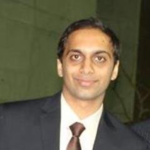 16:30
16:30Digitizing Civil Services: Using Data Analytics and AI to Personalize Learning
By Aditya Khanwelkar Founder @ TrendzLink
16:30 - 16:50In 2017, 1 Million candidates applied for UPSC prelims exam to fill 980 vacancies. That is a 0.1% chance of getting selected. Candidates spend over a year preparing for these exams. Unlike many other exams, these exams require a lot of real-time knowledge of News and Current Affairs. Also, they need to prepare not only for objective questions but also for essay type subjective questions. So while preparing for these exams, candidates can't just go through static content from previous years. To evaluate their answers and to give them instant feedback, we can't rely on curated content. To address these challenges, we built India's first education platform powered by Artificial Intelligence. We provide: * instant feedback on the descriptive answers * provide in-depth analysis of candidates strengths and weaknesses * create a summary of current affairs with timeline, opinions and linked syllabus concepts We believe this is the future of online education. Come to this talk to understand how digitization can disrupt current educational platforms.Digital TransformationWherePlumeria
-
16:30 - 17:15Over 3 months John recorded over 75 hours of interviews and spoke to some of the most respected people in the industry to produce an audio documentary that attempts to answer the question "What is safety? And why is it important anyway?" This highly interactive talk will present the findings and guide and challenge you through a journey to understanding safety. Including short interactive sessions and role play exercises to cover the following topics: * What is safety? * What are the elements that make a team effective? * Is psychological safety the foundation to team performance? * What can we all do to help foster psychological safety in our teams? * What is the relationship between safety, stress and engagement? * What is the profound impact of a lack of safety and engagement on society? This talk has grown as John created the new podcast http://www.agilepath.fm/" data-rt-link-type="externalThe Agile Path. The first season on this podcast is about safety in teams. John has interviewed world renowned specialists in the field; Christopher Avery, David Marquet, Jerry Weinberg, Esther Derby, Johanna Rothman, Woody Zuill and many more in over 75 hours of audio. This has been a fascinating deep dive learning experience for John and he hopes to explore these insights with the audience.Digital TransformationWhereTamarind
-
17:00 - 17:20A deep reflection on the continuous improvement journey post the Agile Transformation era. In this talk, I will share our successes and failures in moving the agility needle in line with organizational goals. Do come and learn how to roll the wheels of continuous sustainable improvements.Digital TransformationWherePlumeria
-
 17:30
17:30Winning Capabilities in a changing Energy Environment
By Nils Kappeyne VP & CIO Integrated Gas & New Energies @ Shell
17:30 - 18:15Shell is one of the largest energy companies in the world, with a long history in Oil & Gas. The Oil & Gas market is known for its long (multi-year) projects and pay-back periods. However, the rise of renewable energy and a changing technology landscape requires doing business differently. One of Shell’s responses to the changing environment is embracing digitalization as an opportunity, and fundamental element of doing business. Nils Kappeyne (VP & CIO of Integrated Gas & New Energies) will share his perspective on how Shell is ‘acting its way into the future’. In this key-note, Nils will explain more about the ‘digital ventures’ that are part of Shell’s New Energies business, and share how a corporation with >90,000 staff is on its way to embed digitalization in the way we do business on a daily basis.Digital TransformationWhereBall Room
-
 10:00
10:00Passionate Product Ownership: A Certified Scrum Product Ownership Workshop
By Jeff Patton Author of User Story Mapping
10:00 - 18:00Product Ownership is hard! If you're working as a product owner in an Agile team, you already know this is the toughest and most critical role in a successful product organization. If you're a UX practitioner, senior engineer, or marketing professional in your organization, it may seem like adopting Scrum or Agile development has stripped away your ability to contribute as a product decision maker. If you're adopting an Agile approach, your organization may be struggling with bloated backlogs that aren't well understood, stressful planning meetings that last too long and fail to get at details needed to deliver predictably, a nagging feeling that you're building the wrong thing, a lack of time to work with customers and users, chronically late delivery, and frustrated business stakeholders...There's hope! The Passionate Product Ownership workshop takes on the bad assumptions and bad practices that often emerge from overly simplistic approaches to agile development and Scrum. Jeff Patton will leverage his past product leadership experience, and years of coaching product teams to teach an effective product ownership strategy.Design InnovationWhereTamarind
-
 10:00
10:00Scaled Professional Scrum with Nexus
By Steve Porter Professional Scrum Trainer and Professional Series Manager @ Scrum.org , Kurt Bittner VP Enterprise Solutions @ Scrum.org
10:00 - 18:00Scaled Professional Scrum™ (SPS) with Nexus™ is a 2-day course that is designed as an experiential workshop where students learn how to scale Scrum using the Nexus Framework. Throughout, you are introduced to the artifacts and events within the framework, the new Nexus Integration Team role, along with more than 50 associated practices. The course also includes a free attempt at the globally recognized Scaled Professional Scrum certification exam. Over the 2 days, students will simulate a large software development project using the Nexus Framework. The workshop is delivered using an end-to-end case study where students work together to organize and simulate a scaled software development project. Throughout the workshop, students will be introduced to more than 50 practices that can be used to help reduce complexity and dependencies at scale. The workshop will provide students with an understanding of how to launch, structure, staff, and manage a large Agile project using Scrum. Throughout the workshop, students will learn the infrastructure, tools and practices needed to successfully scale Scrum to maximize the value of their software development initiative. By taking a hands-on approach, students are fully engaged in the learning process where they see first-hand the challenges in large-scale development initiatives and solutions for getting the work back on track. They will leave the workshop with techniques to detect irregularities and how to address them appropriately.Digital TransformationWherePlumeria
-
10:00 - 18:00In this workshop, we'll look at how to build cloud-native Java applications. A cloud-native application is one that is designed to fully exploit a cloud platform both in the application layer – where things decompose into microservices – and at the data layer where NoSQL offers better horizontal scaling and fitness for specific purpose. WHAT WILL I LEARN * writing services and handling non-functional requirements like metrics and logging with Spring Boot * scaling out safely and building fault-tolerant systems using Spring Cloud and its support for distributed systems patterns like the circuit breaker, service registration and discovery, and centralized configuration management. * offloading as much operational work as possible to the platform, Cloud FoundryDigital TransformationWhereCycad
-
 10:00
10:00Test Refactoring Workshop - Improve Your Unit & Component Tests!
By Gerard Meszaros CTO @ FeedXL Horse Nutrition
10:00 - 18:00High-quality automated unit tests are one of the key development practices that enable incremental development and delivery of software. xUnit is the generic name given to the family of tools/frameworks used by developers when developing automated unit tests. JUnit, NUnit, MsTest and CppUnit are some of the better-known members of the family. This 1-day workshop provides the participants with a vocabulary of test smells and patterns with which to elevate their craft when writing or refactoring test code. These smells give them a way to reason about the quality of their test code. The reusable test code design patterns can be used to eliminate the smells. The emphasis will be on refactoring tests to make them easier to understand and maintain. The workshop introduces a systematic way to identify the test conditions the software needs to handle and how to prepare tests that clearly describe those test conditions in a human-readable way so that the tests can act as effective documentation of what the software should do and what it’s design should be.Continuous Delivery and DevOpsWhereGulmohar
-
10:00 - 18:00The necessity of rapid change is the topic number one nowadays. This regards on the one hand organizational change that we need to create and promote in order to stay in business, to respond to market pressures, and to be innovative. On the other hand this respects change that we face as organizations and individuals. During this workshop I want to provide answers –using both theory and practice– to the following questions: * What’s happening with affected persons during a change? * According to complexity theory there is no resistance to change. So why is change still hard and how can we introduce change smoothly? * What is fundamental to every change? * What needs to be considered for implementing change successfully? * What kinds of change can help making the organizational structure more agile and the organizational strategy better aligned with current needs so that your organization is able to drive the market instead of being driven by the market? In order to answer these questions we will make use from the insights from different change models, Human Systems Dynamics (HSD), and Fearless Change.Digital TransformationWhereCypruss
-
 10:00
10:00Passionate Product Ownership: A Certified Scrum Product Ownership Workshop
By Jeff Patton Author of User Story Mapping
10:00 - 18:00Product Ownership is hard! If you're working as a product owner in an Agile team, you already know this is the toughest and most critical role in a successful product organization. If you're a UX practitioner, senior engineer, or marketing professional in your organization, it may seem like adopting Scrum or Agile development has stripped away your ability to contribute as a product decision maker. If you're adopting an Agile approach, your organization may be struggling with bloated backlogs that aren't well understood, stressful planning meetings that last too long and fail to get at details needed to deliver predictably, a nagging feeling that you're building the wrong thing, a lack of time to work with customers and users, chronically late delivery, and frustrated business stakeholders...There's hope! The Passionate Product Ownership workshop takes on the bad assumptions and bad practices that often emerge from overly simplistic approaches to agile development and Scrum. Jeff Patton will leverage his past product leadership experience, and years of coaching product teams to teach an effective product ownership strategy.Design InnovationWhereTamarind
-
 10:00
10:00Scaled Professional Scrum with Nexus
By Steve Porter Professional Scrum Trainer and Professional Series Manager @ Scrum.org , Kurt Bittner VP Enterprise Solutions @ Scrum.org
10:00 - 18:00Scaled Professional Scrum™ (SPS) with Nexus™ is a 2-day course that is designed as an experiential workshop where students learn how to scale Scrum using the Nexus Framework. Throughout, you are introduced to the artifacts and events within the framework, the new Nexus Integration Team role, along with more than 50 associated practices. The course also includes a free attempt at the globally recognized Scaled Professional Scrum certification exam. Over the 2 days, students will simulate a large software development project using the Nexus Framework. The workshop is delivered using an end-to-end case study where students work together to organize and simulate a scaled software development project. Throughout the workshop, students will be introduced to more than 50 practices that can be used to help reduce complexity and dependencies at scale. The workshop will provide students with an understanding of how to launch, structure, staff, and manage a large Agile project using Scrum. Throughout the workshop, students will learn the infrastructure, tools and practices needed to successfully scale Scrum to maximize the value of their software development initiative. By taking a hands-on approach, students are fully engaged in the learning process where they see first-hand the challenges in large-scale development initiatives and solutions for getting the work back on track. They will leave the workshop with techniques to detect irregularities and how to address them appropriately.Digital TransformationWherePlumeria
-
10:00 - 18:00As organizations embrace more and more cloud technologies, we're recognizing that many of our established approaches to security don't easily translate into the new IT landscape. And with so much attention around cyber threats, it's never been more important to be on top of your security. James Stewart shares techniques for considering the security of whole systems and explores ways of bringing together cross-disciplinary teams to collectively own secure designs. You’ll learn strategies for understanding the various types of bad actors, who want to break the systems and ways to help the whole team contribute to a conversation about how to address those issues and prioritize them against other user needs. You'll then apply them to modern cloud environments, both IaaS and SaaS, and reflect on how to apply this new understanding in your organizations.Digital TransformationWhereCycad
-
10:00 - 18:00Although continuous delivery (CD) and DevOps are growing in popularity, not much practical information is available about how to get started. This hands-on technical tutorial is the place to get your feet wet and your questions answered. For this workshop, Ken and Varsha will provide a cloud-based instance of the continuous delivery server GoCD for you to learn on. You will configure a complete continuous delivery pipeline from source code commit through deployment. Learn when to run each common type of automated test for the fastest possible feedback and how to run tests in parallel for shorter cycle times. Moving from practice to theory, Ken explores industry studies and peer-reviewed scientific research that show the value of practicing continuous delivery and adopting a DevOps culture. He describes how the need for CD developed and then fed the requirements for culture change to support DevOps and CD practices. In this workshop, learn how to create and then practice creating a continuous delivery pipeline—from the ground up.Continuous Delivery and DevOpsWhereGulmohar
-
 10:00
10:00Insights that Inspire Innovation - Harness the power of Design Thinking and Rapid Experimentation
By Deepa Bachu Co-Founder and CEO @ Pensaar
10:00 - 18:00<em>Ready to drive innovation at your company? Want to discover unexpected opportunities that will drive business growth and understand your customers at a deeper level? Then dive in and get your hands dirty </em> Design Thinking as a tool, process and mindset has become popular in the world of business today. Inventors like Thomas Edison and Steve Jobs were quintessential innovators who used a problem-solving process called "design thinking" to revolutionize entire industries and establish an enviable competitive advantage for their companies. Organizations, big or small, required re-inventing themselves almost constantly to establish an enviable competitive advantage for their companies. Design Thinking is helping entrepreneurs in our time directly approach complex problems and innovate disruptive solutions that change lives! The workshop has a human-centered approach to deal with Rapid Experimentation. Many people believe that once they find the "right" idea, their job is done. Not really. First of all, the ideas are based on assumptions. Hence, the best way to overcome uncertainty is to spread your bets with small and quick experiments. This is also a way to test customers on what they say versus what they do. The surprises come in early, and one can make more informed decisions. It also lets them know whether the idea is viable. The workshop is a dynamic mix of short instructional lectures, with an emphasis on hands-on learning. You'll put those new tools into practice right away with a real-world ideation and experimentation challenge. * You will hit the ground running, to test your ideas. * You will refine your ideas based on the experiment results. Implementing the design thinking principles and practices you've learned is our top priority. We also help you create an action plan for real work projects.Design InnovationWhereCypruss
-
10:00 - 18:00You’ve tried and tried to convince people of your position. You’ve laid out your logical arguments on impressive PowerPoint slides—but you are still not able to sway them. Cognitive scientists understand that the approach you are taking is rarely successful. Often you must speak to others’ subconscious motivators rather than their rational, analytic side. Linda Rising shares influence strategies that you can use to more effectively convince others to see things your way. These strategies take advantage of hardwired traits: “liking”—we like people who are like us; “reciprocity”—we repay in kind; “social proof”—we follow the lead of others similar to us; “consistency”—we align ourselves with our previous commitments; “authority”—we defer to authority figures; and “scarcity”—we want more of something when there is less to be had. Learn how to build on these traits as a way of bringing others to your side. Use this valuable toolkit in addition to the logical left-brain techniques on which we depend.Digital TransformationWhereTamarind
-
10:00 - 18:00This is the first Agile HR certification in the world, being offered from ICAgile and it leads to ICAgile Certified Professional - Agile Talent. For HR and managers, agile is basically a way of thinking how organizations should respond to a complex and changing world. By increasingly developing flexibility and adaptability and working in short feedback loops as well as providing autonomy and transparency you can increase learning and value creation for the customer. More and more organizations are now seeing the value in applying the agile mindset also in HR and management, both in the internal work but perhaps most importantly how an HR department helps to support an organization's agility. When traditional processes focus on command and control, an agile HR-functions role is to create value and support unique needs.Business AgilityWherePlumeria
-
 10:00
10:00Leading Your Agile Transformation
By Ray Arell Corporate Outreach & Business Development @ Agile Alliance
10:00 - 18:00In the past decade, Agile development has become mainstream in software development and now is spreading beyond software to other domains. It is crucial for leaders and managers to understand how to build, develop, and lead Agile teams - not just for the organization but their careers. Ray Arell introduces a cohesive set of methods, practices, and principles to maximize business results from Agile and lean development, while also cultivating a workplace where people thrive. The workshop topics are highly dynamic and customizable, and more than 80 percent of the discussion will be based on participants’ interests. Possible topics include Agile mindset, shared leadership models, building great teams, work environment, resources, transformation vision, creating common goals, experiments, value delivery, dealing with global culture, common Agile methods, lean - and much more. Join Ray in a workshop that has been taught to more than 2000 change agents, executives, and managers worldwide. Expand your abilities and tools in leading Agile transformations in your organization.Business AgilityWhereCycad
-
 10:00
10:00Business Agility Foundations Certification
By Shane Hastie Director of Agile Learning Programs @ ICAgile
10:00 - 18:00As the world changes at an unprecedented pace, imagine if organisations could navigate through change and use it as an opportunity to get better, rather than simply getting through. This unique program offers an intense, strategic appreciation for leaders and practitioners to understand the ingredients to create an Agile organisation that is responsive to value creation in a disruptive environment. This practical workshop is designed to help you to speed your business up, to focus on what’s important, reduce waste and red tape and, most importantly deliver value to your business and your customers. This foundation is essential for leaders to jumpstart learning on how to thrive in uncertainty and create organisational success. The ICP-BAF Certification from ICAgile is granted on the successful completion of this workshop, the subsequent 2 webinars, and a written submission. To obtain the certificate there is an additional $100 USD fee to be paid to ICAgile.Business AgilityWhereGulmohar
-
10:00 - 18:00This is the first Agile HR certification in the world, being offered from ICAgile and it leads to ICAgile Certified Professional - Agile Talent. For HR and managers, agile is basically a way of thinking how organizations should respond to a complex and changing world. By increasingly developing flexibility and adaptability and working in short feedback loops as well as providing autonomy and transparency you can increase learning and value creation for the customer. More and more organizations are now seeing the value in applying the agile mindset also in HR and management, both in the internal work but perhaps most importantly how an HR department helps to support an organization's agility. When traditional processes focus on command and control, an agile HR-functions role is to create value and support unique needs.Business AgilityWherePlumeria
-
10:00 - 18:00Hands-on development of asynchronous micro-services using a bus architecture. While “micro-services” is becoming a heavily over-worked term, it has been interpreted many ways. In this hands-on workshop, we will explore a particular style, tiny asynchronous services, that was the core of one of the most successful implementations. Given an animated specification of flow, we will embark on delivering the proposed services, wrestling with the issues common to this new paradigm. Participants have a choice of languages, with new starting code in Java, C#, and Ruby. At the end of the workshop, we will discuss MicroServices challenges and organizations that are optimized for such architectures.Digital TransformationWhereTamrind
-
 10:00
10:00Intro to Design Thinking
By Teresa Brazen Senior Director, Professional Education @ Cooper , Andrew Kaufteil Senior Director, Growth & Partnerships @ Cooper
10:00 - 18:00Have you heard the terms “Design Thinking” or “Human-Centered Design” and thought, “That sounds cool, but what exactly is it?” In this full-day, hands-on workshop, the Cooper Team will introduce you to the power of Design Thinking. You’ll learn the process of this strategic problem-solving approach, and how it can help you and your organization rethink the products, services, and experiences you offer to both internal and external audiences. The workshop will allow you to learn and practice a few Design Thinking tools and empower you to make your work more collaborative, innovative, and effective.Design InnovationWhereCycad
-
 10:00
10:00Beyond Budgeting - Business Agility In Practice
By Bjarte Bogsnes Senior Advisor Performance Framework @ Statoil
10:00 - 18:00Get an in-depth understanding of the agile management model Beyond Budgeting, from background to philosophy to its 12 principles covering both leadership and management. Benefit from Bjarte’s long Beyond Budgeting implementation experience in two large organisations, starting in the mid-nineties, before Beyond Budgeting was born. Understand how to trust and empower without losing control. Learn how to redefine performance – with dynamic and relative targets (or no targets at all) and a holistic performance evaluation. The workshop will also cover dynamic forecasting and resource allocation without budgets. Discover other examples of self-regulating management mechanisms, including transparency. Bjarte will also share insights into KPI pitfalls, the bonus ‘problem’, and the relationship between Beyond Budgeting and Agile. You will also hear about companies all over the world who have embarked on this journey, including the Statoil story, Scandinavia's largest company which kicked out the budget (and much more) in 2005.Business AgilityWhereGulmohar
